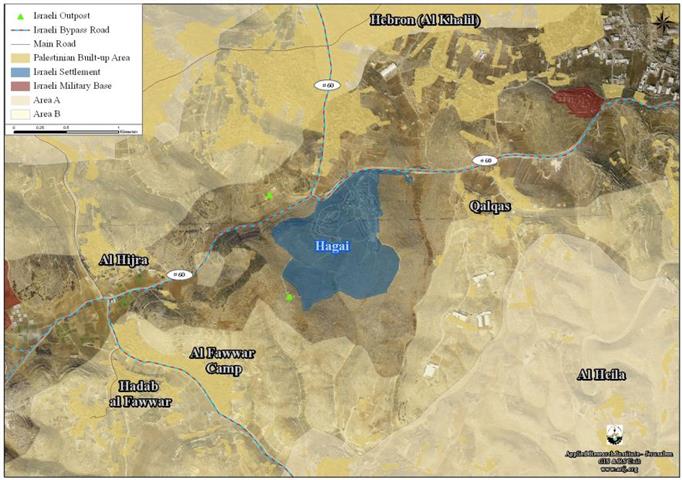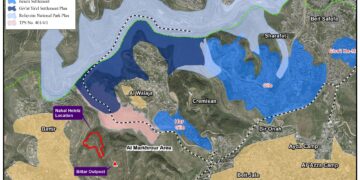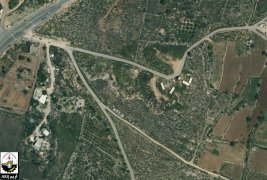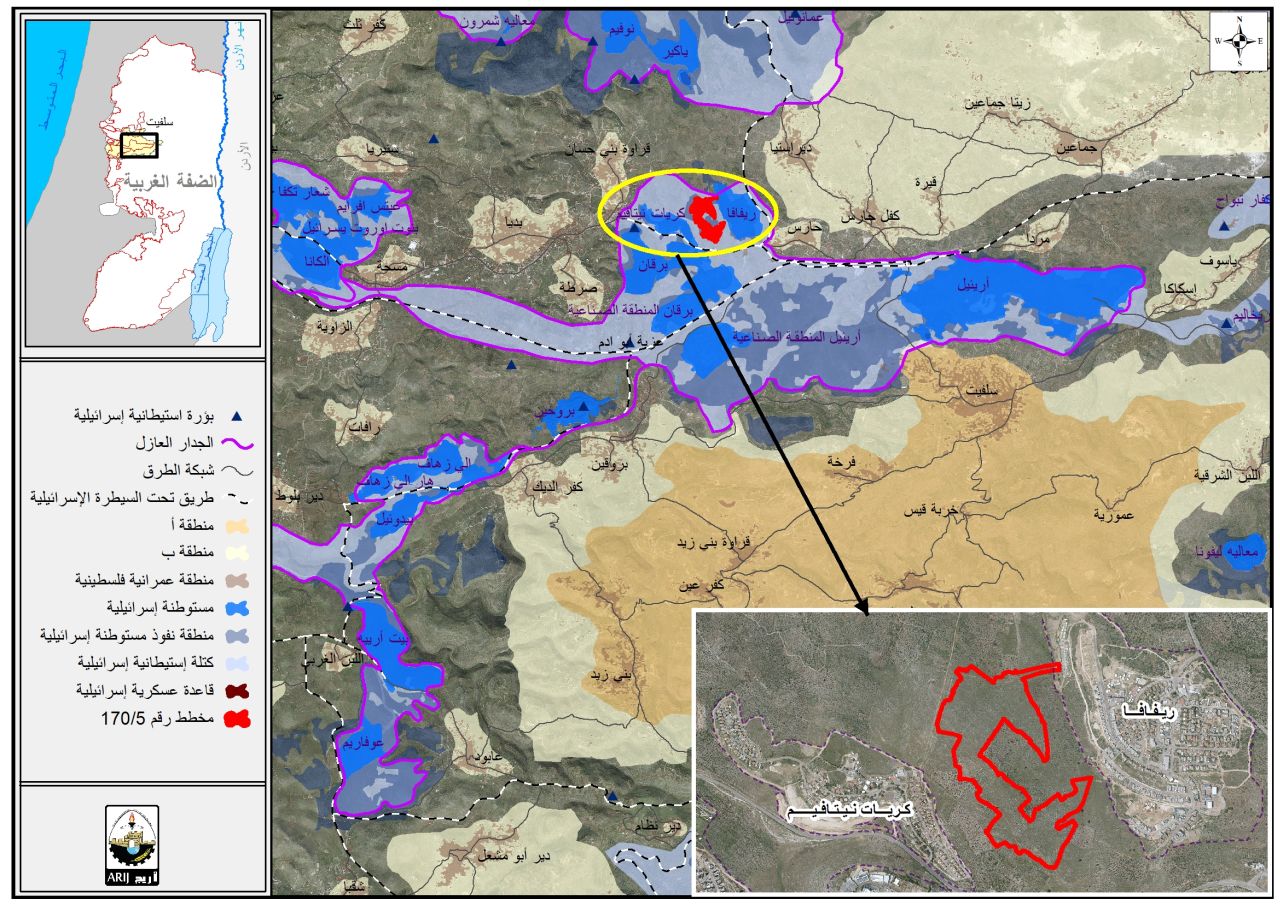|
Table 1: Lands on which Beit Hagai settlement was established
|
|
|
Locality Name
|
Area occupied by Settlement (Dunum)
|
|
Hebron
|
939.8
|
|
Dura
|
50.5
|
|
Total
|
990.3
|
|
Source: Applied Research Institute – Jerusalem (ARIJ), 2010
|
|
-
Article XXXI of the 1995 Oslo agreement provides that: Israelis forbidden from building or planning to any project or settlements or any colonial expansion or any plan that lead to change the status of the West Bank and Gaza Strip. The article provides “Neither side shall initiate or take any step that will change the status of the West Bank and the Gaza Strip pending the outcome of the permanent status negotiations”.
-
Furthermore the Forth Geneva Convention also states in Article 49 that “The occupying power shall not deport or transfer parts of its own population into the territories it occupies.
-
United Nations Security Council Resolutions such as 237 (1967), 271 (1969), 446 (1979), 452 (1979),465 (1980.
-
Resolution 446 March 22, 1979 calls on Israel to rescind its previous measures and to desist from taking any action which would result in changing the legal status and geographical nature and materially affecting the demographic composition of the Arab territories occupied since 1967, including Jerusalem and, in particular, not to transfer parts of its own civilian population into the occupied Arab territories’
-
Also the resolution 452 of the 1979 “calls upon the Government and people of Israel to cease, on an urgent basis, the establishment, construction and planning of settlements in the Arab territories occupied since 1967, including Jerusalem.
The Applied Research Institute – Jerusalem
ARIJ















